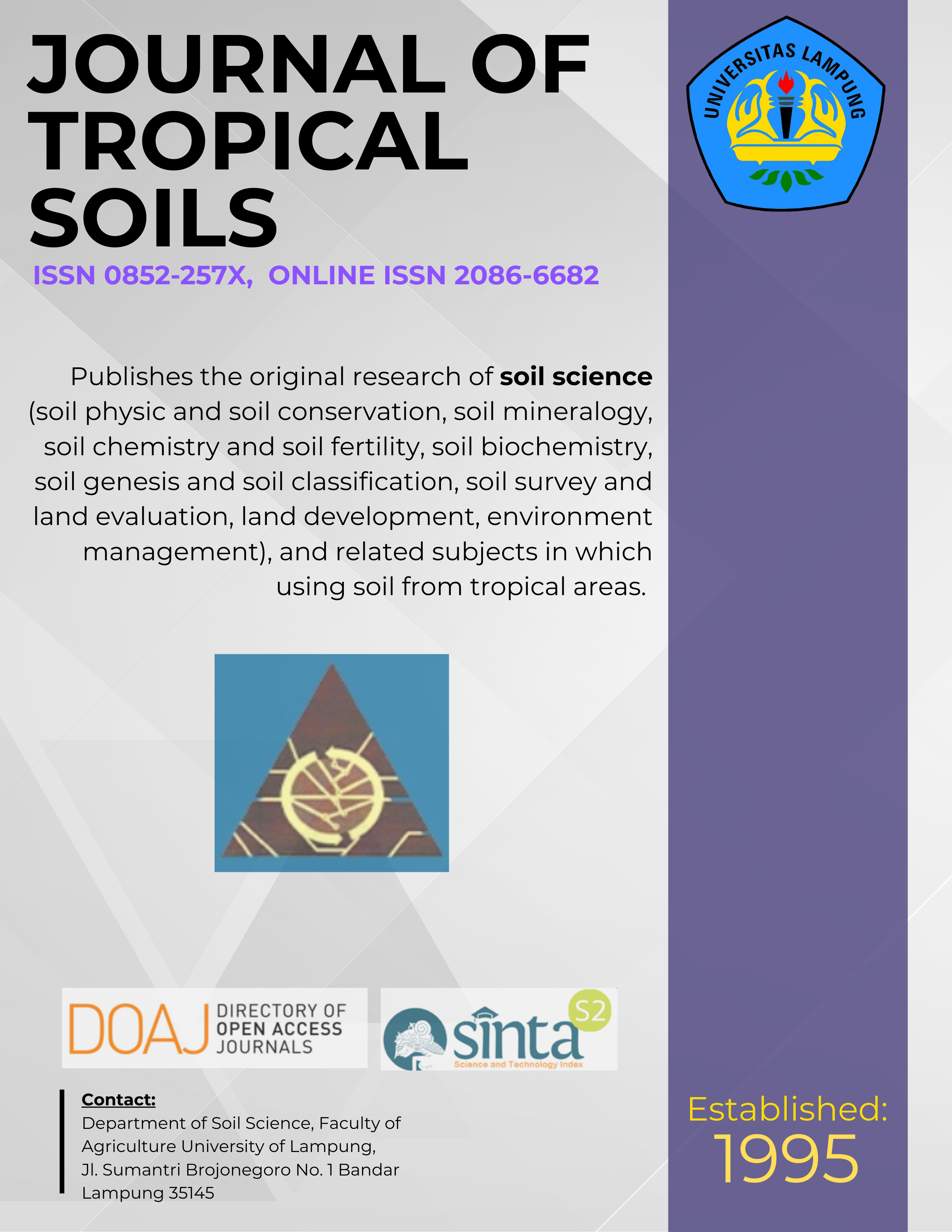Sorptivity of an Inceptisol under Conventional and Reduced Tillage Practices
Main Article Content
Abstract
The amount of water captured and stored in the soil profile until the next precipitation events is of great importance in dryland agro-ecosystem for successful crop production. The soil’s ability to rapidly capture and store water precipitation can be accessed through measuring soil sorptivity. The objectives of this study were to evaluate the effects of tillage, i.e. reduced and conventional tillages, on soil sorptivity, and to understand how sorptivity is related to surface soil bulk density and water stable aggregates. The experiment was conducted on a site, which has been continuously planted with corn twice a year for more than 10 years. The predominant soil in the study site is Typic Haplusteps. Ponded infiltration measurements were used to determine soil sorptivity. Six positions, 15 meters a part, were chosen within each treatment to measure sorptivity, bulk density and water stable aggregates. Conventional tillage resulted in higher sorptivity (p<0.05), lower surface bulk density (p<0.05), and significantly lower water stable aggregates (p<0.01) than reduced tillage treatment. Sorptivity was negatively correlated to bulk density and positively correlated to water stable aggregates. Better correlations were found between sorptivity and both bulk density (R2 = 0.67) and water stable aggregates (R2= 0.81) under reduced tillage than under conventional tillage treatment. Conventional tillage was found to enhance soil sorptivity in comparison to reduced tillage system. Appropriate soil management is important to maintain proper soil porosity in the field for better rainfall harvesting and plant growth especially in the dryland ecosystem.Â
Downloads
Article Details
Section
License for Authors
Authors who publish with this journal agree to the following terms:
- Authors retain copyright and grant the journal right of first publication with the work simultaneously licensed under a Creative Commons Attribution License that allows others to share the work with an acknowledgement of the work's authorship and initial publication in this journal.
- Authors are able to enter into separate, additional contractual arrangements for the non-exclusive distribution of the journal's published version of the work (e.g., post it to an institutional repository or publish it in a book), with an acknowledgement of its initial publication in this journal.
- Authors are permitted and encouraged to post their work online (e.g., in institutional repositories or on their website) prior to and during the submission process, as it can lead to productive exchanges, as well as earlier and greater citation of published work (See The Effect of Open Access).
License for Regular Users
Other regular users who want to cite, distribute, remix, tweak, and build upon author’s works, even for commercial purposes, should acknowledge the work’s authorship and initial publication in this journal, licensed under a Creative Commons Attribution License.

